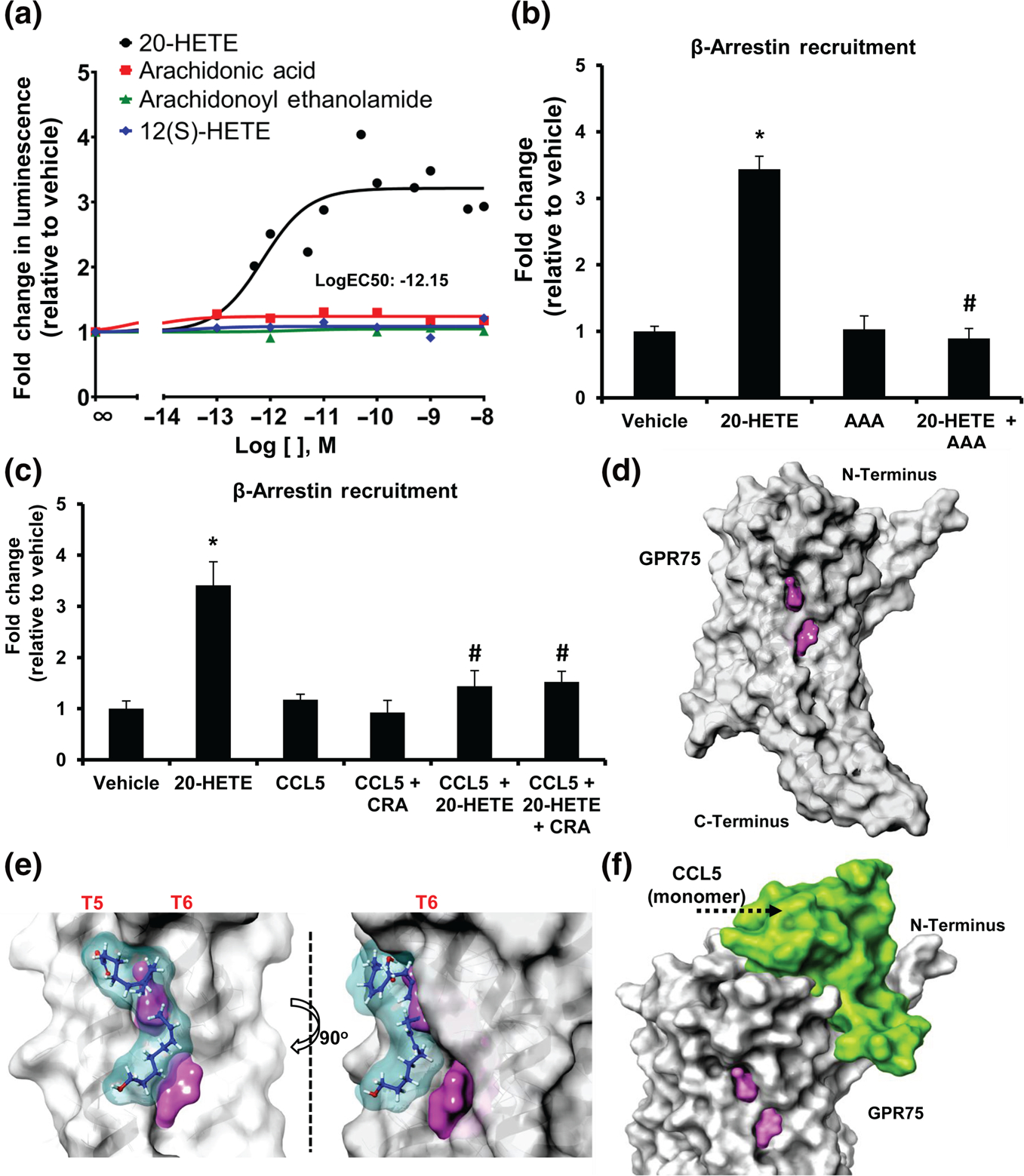FIGURE 3.

20-HETE, but not CCL5,increases β-arrestin recruitment to GPR75. (a) PRESTO-tango β-arrestin recruitment assay in HTLA cells overexpressing GPR75-tango constructs treated with increasing concentrations of 20-HETE, arachidonic acid, arachidonoyl ethanolamide and 12(S)-HETE; (b) fold change in β-arrestin recruitment in response to 20-HETE (1 nM), AAA (1 nM) and co-treatment of equimolar concentrations of 20-HETE and AAA (1 nM). (c) CCL5 blocks 20-HETE-mediated β-arrestin recruitment to GPR75. Fold change in β-arrestin recruitment in response to 20-HETE (1 nM), CCL5 (0.1 nM) and the co-treatment of CCL5 (0.1 nM) with 20-HETE (1 nM) in the presence and absence of CCL5 receptor antagonists (CRA) (BX471 targeting CCR1 (25 nM), SB328437 targeting CCR3 (80 nM) and DAPTA targeting CCR5 (20 nM)). (d–f) Molecular modelling of GPR75. GPR75 (grey) alongside the (d) ligand binding site (pink), (e) 20-HETE-GPR75 ligand–receptor binding model (20-HETE in blue) and (f) the CCL5-GPR75 protein–protein interaction model. Data shown are means ± SEM; n = 8–12). *P < 0.05, significantly different from vehicle (ethanol), #P < 0.05, significantly different from 20-HETE)
